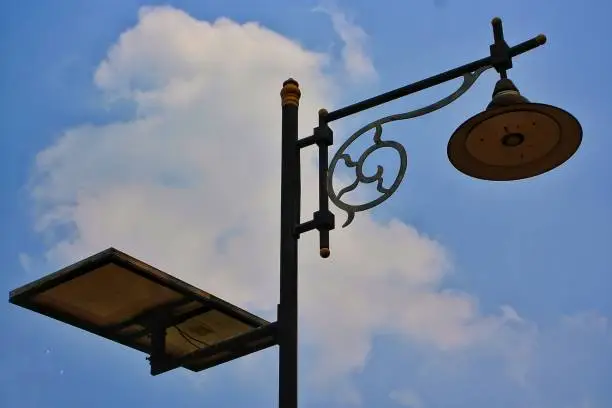12 Benefits of LED Street Lights for Outdoor Use
Outdoor lighting plays a crucial role in public safety, community aesthetics, and urban efficiency. Over the last decade, LED street lights have emerged as the preferred choice for municipalities, businesses, and homeowners looking for reliable outdoor illumination. With advancements in technology, these lights offer significant advantages over traditional lighting systems like sodium vapour or fluorescent lamps.
Whether you’re illuminating a busy highway, a residential street, or a public park, LED street lights deliver unmatched performance and value. Below, we explore the 12 key benefits of led street lights outdoor usage.
1. Energy Efficiency
One of the most significant advantages of LED street lights is their energy efficiency. Unlike traditional incandescent or fluorescent lights, LEDs consume up to 80% less energy. This drastic reduction in energy consumption not only lowers electricity bills for municipalities but also lessens the burden on electrical grids.
By utilising energy-efficient lighting, cities can redirect funds to other critical areas, enhancing overall community welfare. For example, the energy savings can be reinvested in community programs, infrastructure improvements, or other public services that benefit residents.
2. Longevity
LED street lights boast an impressive lifespan, lasting up to 25 years or more with proper maintenance. This long operational life reduces the frequency of replacements and the associated labor costs. Additionally, the longer lifespan means fewer materials are used in production and disposal, contributing to a more sustainable environment.
The durability of LEDs also means they can withstand harsh weather conditions, making them ideal for varied climates. This resilience further decreases the need for maintenance and replacement, solidifying their position as a cost-effective lighting solution.
3. Improved Visibility
LED street lights provide brighter and more focused illumination compared to traditional lighting solutions. The enhanced visibility improves safety for pedestrians and drivers alike, reducing the likelihood of accidents.
Well-lit streets encourage outdoor activities and foster a sense of security in communities, making them more vibrant and active. Studies have shown that improved street lighting can lead to a significant decrease in crime rates, as criminals are less likely to operate in well-lit areas.
4. Reduced Light Pollution
LED technology allows for better control over light distribution. This means that light can be directed where it’s needed without spilling into unwanted areas, such as residential neighbourhoods. By minimising light pollution, LED street lights contribute to a healthier night-time environment for both humans and wildlife, preserving the natural beauty of the night sky.
Furthermore, reducing light pollution helps protect nocturnal wildlife and supports ecological balance, making LED street lights a more environmentally friendly option.
5. Lower Maintenance Costs
The durability and long lifespan of LED street lights result in significantly lower maintenance costs. Traditional street lights often require frequent bulb changes and repairs, leading to higher operational costs.
In contrast, LEDs require minimal maintenance, allowing cities to allocate resources more effectively and focus on other pressing infrastructure needs. This efficiency also translates to fewer service interruptions, ensuring that streets remain well-lit and safe for longer periods.
6. Environmentally Friendly
LED street lights are environmentally friendly. They use less energy, which translates to lower greenhouse gas emissions. Furthermore, unlike some traditional lights that contain harmful substances like mercury, LEDs do not pose a risk to the environment during disposal.
By opting for LED technology, cities can support global sustainability efforts and contribute to carbon neutrality goals. The shift towards renewable energy sources for powering street lights further bolsters these environmental benefits.
7. Quick Installation
The installation process for LED street lights is generally quicker and easier compared to traditional lighting systems. Many LED solutions are designed for straightforward installation, reducing downtime and inconvenience to the public. This efficiency allows municipalities to upgrade their lighting systems without significant disruption.
Additionally, some LED street lights come with integrated solar panels, eliminating the need for extensive wiring and further speeding up the installation process.
8. Versatile Applications
LED street lights come in various designs and power options, making them suitable for diverse applications. From residential areas to busy urban streets, LEDs can be tailored to meet specific lighting needs.
Whether for pedestrian paths, parking lots, or major roadways, LED technology offers flexible solutions that can enhance any outdoor environment. Moreover, the ability to customize brightness levels and light patterns allows municipalities to adapt lighting to specific conditions, improving overall efficiency.
9. Enhanced Safety and Security
Well-lit areas are safer areas. LED street lights improve nighttime visibility, making public spaces safer for pedestrians and drivers. The increased illumination deters criminal activities, promotes safer neighborhoods, and encourages community engagement.
A well-lit area is not only more secure but also more inviting, fostering a stronger sense of community. Research indicates that improved lighting can lead to increased foot traffic, which further enhances safety and security through community presence.
10. Smart Technology Integration
Many modern LED street lights are compatible with smart technology, allowing for features like remote monitoring and control. This capability enables municipalities to adjust lighting based on real-time conditions, such as weather changes or pedestrian traffic.
Smart street lighting can lead to further energy savings and improved public safety. For instance, lights can dim during low traffic periods and brighten when motion is detected, optimizing energy use while maintaining safety.
11. Cost-Effectiveness
While the initial investment in LED street lights may be higher than traditional options, the long-term savings are substantial. Lower energy costs, reduced maintenance, and fewer replacements contribute to a lower total cost of ownership.
Over time, municipalities can save significant amounts, making LEDs a cost-effective solution for public lighting. Additionally, many governments offer incentives or grants for transitioning to energy-efficient lighting, further easing the financial burden of initial investments.
12. Positive Social and Economic Impact
Investing in LED street lights can have a positive ripple effect on communities. Improved public infrastructure leads to enhanced quality of life, as safer streets attract more businesses and encourage outdoor activities.
The presence of well-lit streets can stimulate economic growth, benefiting local economies and fostering vibrant, thriving communities. Enhanced lighting can also lead to increased property values, making neighborhoods more attractive to potential homebuyers.
Conclusion
The transition to LED street lights represents a significant advancement in outdoor lighting technology. With benefits ranging from energy efficiency and longevity to improved safety and environmental sustainability, LEDs are transforming the way we illuminate our streets. As cities continue to prioritise smart, sustainable solutions, LED street lights will play a crucial role in shaping the future of urban landscapes.
For those interested in exploring advanced outdoor lighting solutions, including options like split solar street lights, visit Nokin Street Light. Embracing LED technology not only enhances public safety but also contributes to a greener and more sustainable future.











